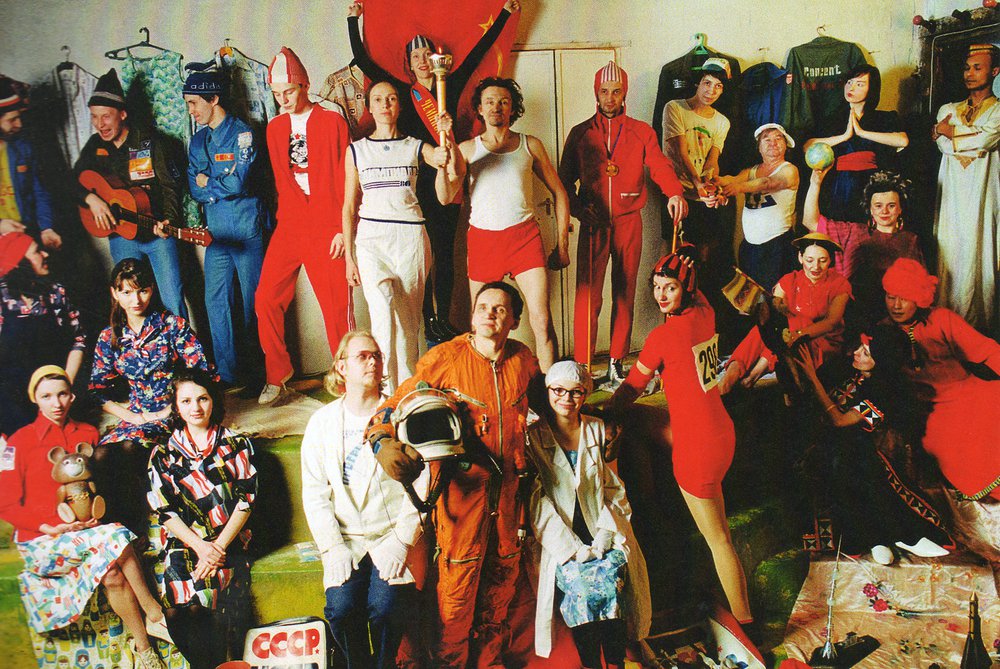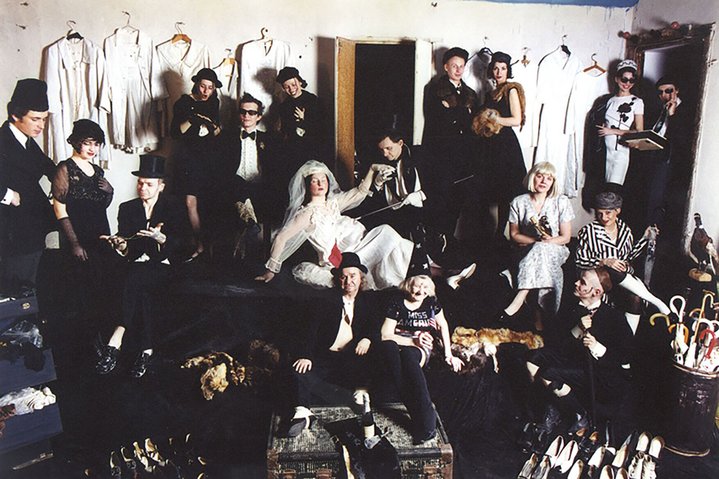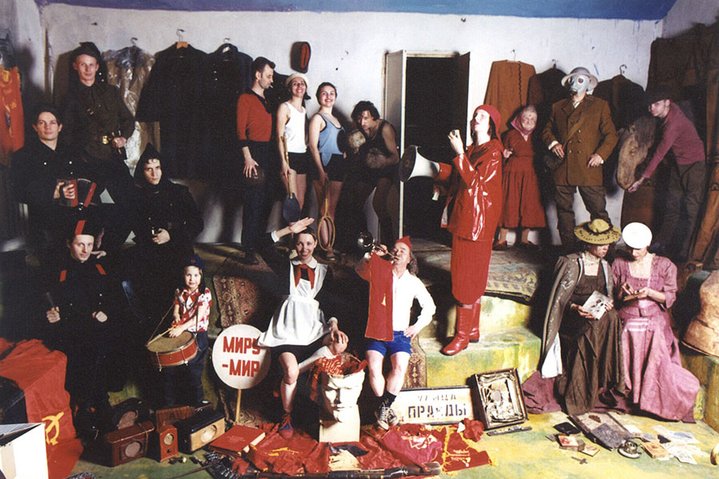Alexander Petlyura: a poet of flea markets and rubbish dumps

Good-bye Doves! “The Empire of Things” project. Moscow. 1999–2000. Photo by Vita Buivid
Museum recognition for artist Alexander Petlyura, known as the "collector of Soviet underwear''
When bailiffs ordered Alexander Petlyura to vacate the basement he had rented for over 20 years in the grounds of Moscow monastery in April, it looked as if the Russian experimental artist would have nowhere to go with his unique collection of Soviet apparel. Somewhat unexpectedly, the Museum of Moscow stepped in to help, offering to show Petlyura’s work for a full six months in his first ever exhibition at a major Russian state institution. The mainstream is unfamiliar ground for Petlyura who made his name in the underground art movement that bubbled to the surface in the 1990s after the Soviet Union collapsed and free expression, suffocated for 70 years, suddenly became possible.
While Muscovites were delightedly shopping for newly available western goods, Petlyura was busy scouring city flea markets and rubbish dumps for Soviet clothes and objects that most people didn’t want any more. Over thirty years of collecting, he has accumulated more than 3,000 frocks, 2,000 pairs of shoes as well as a host of toys, ornaments, suitcases and some rather creepy prosthetic legs that, after repair and restoration, take on new life in wildly inventive performances and installations.
“I have taken on the burden of collecting things from a country that doesn’t exist any more,” Petlyura says. “It’s a mission to document and preserve the memory of the Soviet era and explore the consciousness of people who lived in those times.”
A graduate of the Stroganov Academy of Industrial Art, Petlyura has an eye for how unwieldy spaces can be put to use as arenas for the creative arts. The derelict building in Moscow where he founded the Free Academy of Art squat in 1991 became a haven for alternative artists to party and exchange ideas and a theatre for impromptu theatrical and fashion shows.
While nurturing budding artists talent and ideas, (Russian fashion designer Olga Soldatova and the digital artist Olga Tobreluts were among early visitors to the squat) Petlyura also has an extraordinary ability to turn the most unlikely characters into outstanding performers and models. “Anyone can act under my direction,” he says. Among his most famous people creations was Bratislava Dubner - an impoverished pensioner he found living in a squalid flat above the squat and re-invented as the racy blonde model ‘Pani Bron’ who carried off the prize at the Alternative Miss World pageant in London in 1998.
In Europe and the US, Petlyura is recognised as a groundbreaking artist, but he has struggled for recognition in his own country and has never benefited from Russian state art funding. “The Archeology of Petlyura” exhibition at the Museum of Moscow - to be followed next year by monthly performances from the artist’s Empire of Things series - could mark a turning point. ”I’ve always been seen by officials as an underground person, a madman or even a maniac who collects Soviet underwear,” he says. “If my work can be shown at the Museum of Moscow I must have been accepted as a mainstream contemporary artist.”








